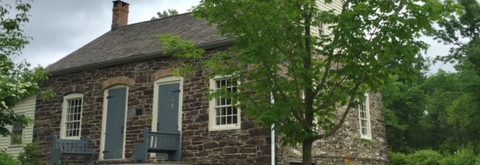The first landowners in what was to become Montgomery Township were speculators. Many speculators and early settlers were of Dutch descent from the New Amsterdam area (especially Long Island), which, after the British ousted the Dutch (1664), was renamed New York in honor of the Duke of York (the future James II. They themselves did not live on the land, but sold large parts of what they owned to companies that subdivided it into farm-sized plots for those who did intend to settle.
The Township was originally known as the Western Precinct of Somerset County (i.e. west of the MillstoneRiver). Before the creation of MercerCountyin 1838, the southern border extended to Nassau Streetin Princeton. In 1798 the Western Precinct was organized as MontgomeryTownship, named for Colonel Richard Montgomery, who fell fighting for the patriot cause in the Battle of Quebec at the start of the Revolution (1775).
Settlement began in the first quarter of the eighteenth century. Most of the land, running westward from the Millstone River to Province Line, which divides Somerset from Hunterdon County, once marked the division between East and West Jersey. Farms of 300 to 500 acres were common, some owners keeping a few slaves to work the land and serve in the household. The aim of the early settlers was subsistence farming. Each farm had a vegetable garden, orchard, pasturage and fields for grain, as well as a stand of timber to be selectively cut for fuel.
When churches, schools, general stores, blacksmith shops and hotel/taverns were built, they tended to cluster at intersections or other important points. Schools were generally spaced no further than four miles apart so that no child would have to go more than two miles to get to class. Churches marked the most important centers.
The Dutch Church’s earliest congregations first gathered in farm houses. The first church building atHarlingendates to around 1750 and was called the Church at Sourland. The church at Neshanic in HillsboroughTownshipwas established in 1752. In the early years these two churches shared a single pastor, and up to about 1800 they conducted their services in the Dutch language. One such pastor was Martinus Van Harlingen, who gave his name to the village, to the church that now bears his name, and to our Historical Society. The Blawenburg church, an offshoot of the one atHarlingen, dates to 1830 and was erected in three days.
During the Revolution, the Township was the scene of marches by both British and patriot forces and of clashes between them. In the century that followed the movement of goods and people was accelerated by increasingly swifter forms of transportation. First was the building of the Georgetown and Franklin Turnpike between Lambertville and New Brunswick (1820-22: Rt. 518). Next came the digging of the Delaware and Raritan Canal along the east side of the Millstone River (1834). Railroad construction followed with the Delaware and Boundbrook Railroad (later the Reading), which established depots at Skillman, Harlingen and Belle Mead (1875). In the early years of the twentieth century, the arrival of the automobile, of electricity and of the telephone brought further growth and change.
In consequence, and over time, the one or two room schoolhouse was supplanted by the central school, post offices were consolidated and most of the hotels/taverns disappeared. The crossroad hamlets that once offered basic services of general store, blacksmith shops and the like disappeared also, many leaving only their names to mark a road or an area: Skillman, Bridgepoint and Dutchtown are examples.
The paving and realignment of roads, and the building of new ones, came toward the end of the transportation revolution. A new major north-south highway, Route 206, was created in 1927. In the late nineteenth century subsistence farming was giving way to specialized operations, such as dairying, poultry farming, and fruit orchards. As the 19th century drew to a close farms became less and less profitable, the land was converted to other uses. For example, in 1898 the facility for the treatment of epileptics was built on farmland between Blawenburg and Skillman. Since the Second World War, housing developments, shopping centers and business parks have sprung up and suburbanization has taken a grip on our once pastoral township.
